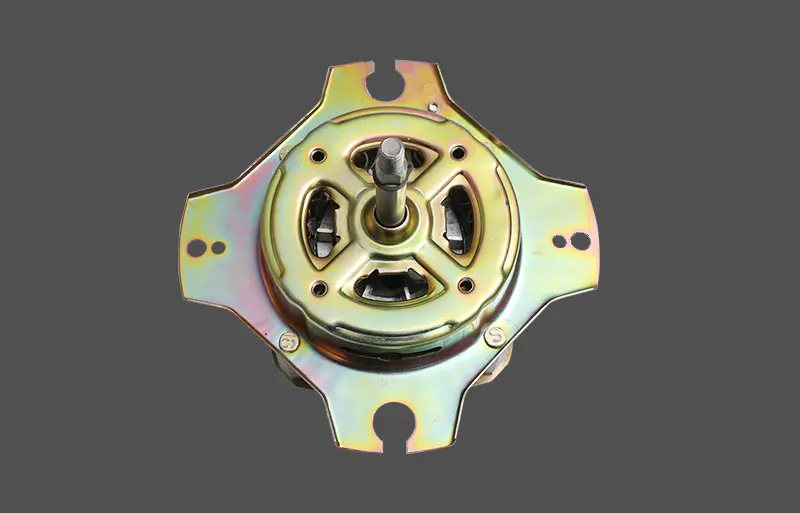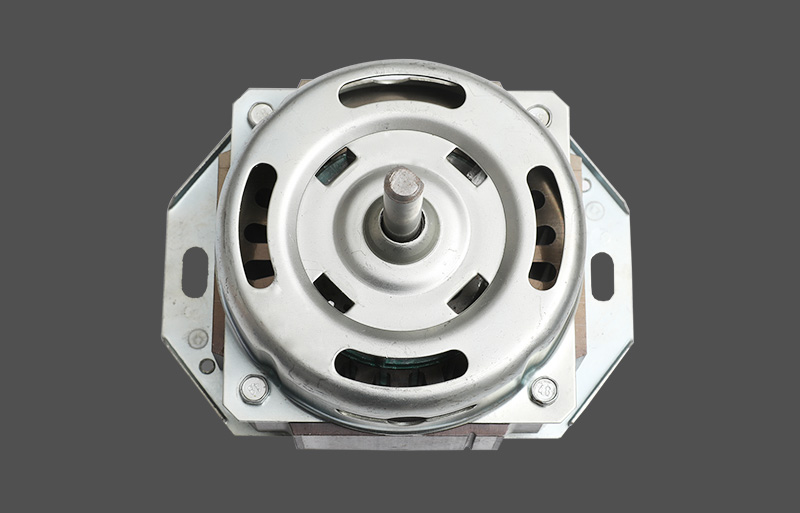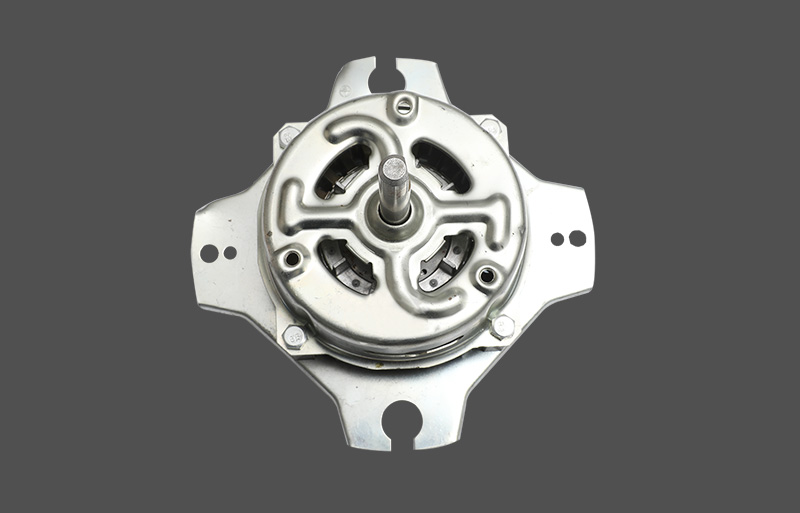In modern washing machines, motors play a critical role in driving the core functions of the appliance. Among these motors, the spin motor and the drive motor are two of the most essential components. Though both are types of electric motors, their functions, operational principles, design, and application areas are quite different. Understanding the distinction between these two types of motors is crucial for both consumers and professionals in the washing machine industry.
1. Definition of Spin Motor and Drive Motor
Spin Motor: As the name suggests, the spin motor is responsible for the high-speed rotation of the washing machine drum during the spin cycle. Its primary function is to remove excess water from clothes by spinning the drum at high speeds. Typically, the spin motor must provide high rotational speed and stability, allowing the drum to spin fast enough to effectively extract water from wet clothes.
Drive Motor: The drive motor, on the other hand, is responsible for powering the washing machine's cleaning process. It drives the drum or agitator (depending on the washing machine type) during the wash and rinse cycles. Unlike the spin motor, the drive motor operates at lower speeds and needs to provide high torque to move the clothes efficiently during washing and soaking stages.
2. Operational Principles and Functions
Spin Motor Operation:
The spin motor operates during the spin cycle, where its primary task is to rotate the drum at high speeds. Typically, spin motors can reach speeds of up to 1000-1600 RPM or even higher in some high-end models. This high-speed rotation generates centrifugal force, which expels water from the clothes, accelerating the drying process. Given the high rotational speed required, the spin motor is designed for stability and durability under rapid motion.
Drive Motor Operation:
In contrast, the drive motor works throughout the washing process, including washing, rinsing, and sometimes during the soaking phase. The drive motor operates at relatively lower speeds but needs to generate substantial torque to rotate the drum or agitator. This torque ensures that the clothes are moved around the drum, allowing detergent to penetrate and effectively clean the fabric. The drive motor usually operates under variable speed control to accommodate different washing modes.
3. Design and Structural Differences
Spin Motor Design:
Spin motors are generally designed to withstand high-speed rotation. They are built with materials that can endure the heat generated from prolonged high-speed operation. Compared to the drive motor, the spin motor’s design is more compact since it needs to fit within the spin system and focus on delivering the necessary rotational force for effective water extraction. The motor windings and internal components often use heat-resistant materials to ensure that the motor remains stable during high-speed operation.
Drive Motor Design:
The drive motor, on the other hand, is designed with an emphasis on torque output and stability at lower speeds. It needs to generate enough force to rotate the drum or agitator, which requires a motor that can handle higher starting torque and provide consistent power throughout the wash cycle. To achieve this, the drive motor often uses a robust, durable design that can handle vibrations and wear from constant use over an extended period.
4. Application Differences
Spin Motor Applications:
The spin motor’s function is mainly restricted to the spin cycle. During this stage, the motor is activated to rotate the drum at high speeds, extracting water from the clothes. Since the spin cycle is typically shorter in duration than the wash or rinse cycles, the spin motor needs to operate efficiently and reliably at high speed. It is typically only engaged during the spin-drying phase, and thus its duty cycle is limited.
Drive Motor Applications:
The drive motor is in operation during most of the washing process, including washing, rinsing, and possibly soaking phases. Its role is to rotate the drum or agitator to ensure that the clothes are adequately cleaned. Because the drive motor operates for a longer duration than the spin motor, it is designed to handle continuous use over extended periods without overheating or experiencing significant wear. The drive motor is also typically responsible for powering the washing machine through various wash cycles, adapting to different washing modes and clothing types.
5. Common Failures and Maintenance Differences
Spin Motor Failures:
Common issues with spin motors include problems such as insufficient rotational speed, instability during spin, excessive noise, or the motor failing to start. These failures can be caused by electrical issues, worn-out brushes (in brushed motors), or damaged components within the motor itself. Since the spin motor is responsible for high-speed rotation, prolonged use may lead to overheating or mechanical wear of key parts.
Drive Motor Failures:
Drive motor issues typically involve difficulties with startup, unstable speeds, or a total failure to rotate. These issues often arise due to electrical malfunctions, such as problems with the motor windings or the control circuit. The drive motor’s responsibility for generating torque and providing power over long periods means that failures can disrupt the entire washing cycle. Drive motor components are often subjected to wear and tear from constant use, and any damage may result in inadequate washing performance.











